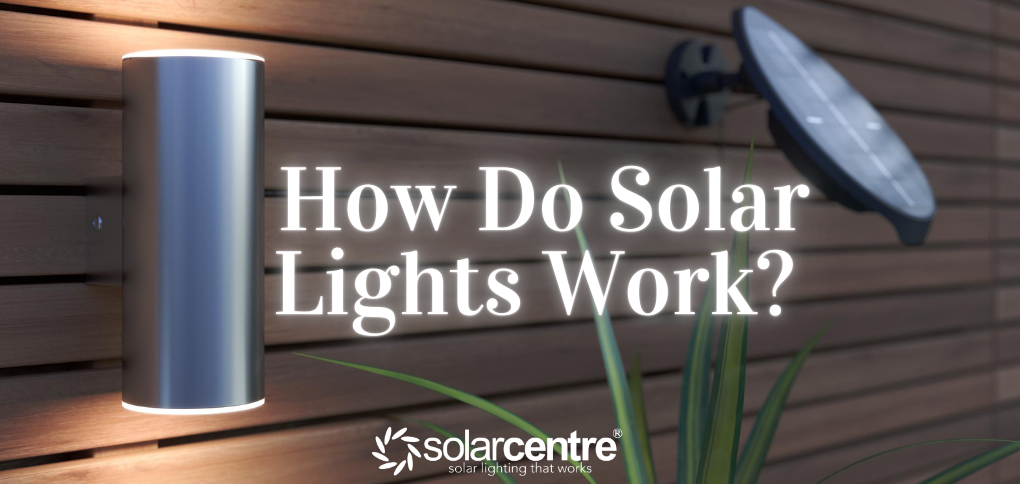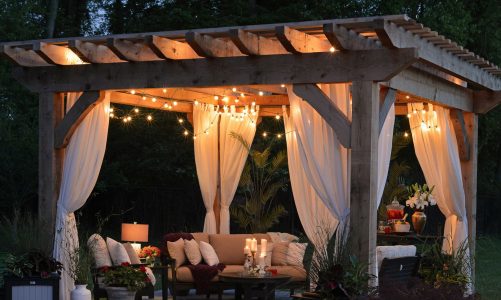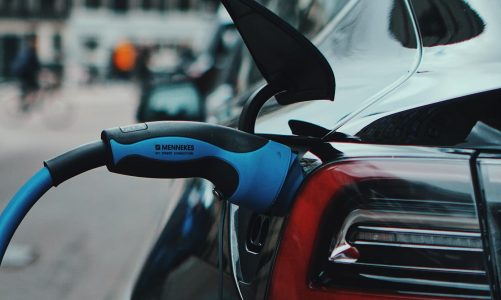Increasing the amount of sustainable energy we use is instrumental in combatting global warming.
Although it can be challenging to change habits and make the switch to a completely green way of living, there is one quick and easy change to your home that can really slash energy bills — lights. Whether it’s outdoor lamps, hanging lights, fairy lights or general garden lights, it’s important to understand how solar lights work and their numerous benefits.
Before talking about the many benefits of solar lights, it’s important to understand how solar lights work.
All solar lights contain a battery, but unlike typical single-use ones, solar light batteries are rechargeable. When sunlight hits the solar panel, it converts it into electricity that is then stored in the battery as chemical energy, changing back into electrical energy when the circuit is closed and the lights are turned on.
Photoresistors on the solar light will activate when the available light drops below a preset level, illuminating the area.
All solar lights are at least water resistant, while most are waterproof. With water-tight circuitry, they can be used outside in wet conditions without suffering damage. This is especially important for lights exposed to the elements, like wall lights.
How do Solar Panels work?
Solar panels absorb sunlight through photovoltaic cells across the face of the solar panel, resulting in a generation of electricity. When sunlight hits these cells, it stimulates electrons and knocks them loose from their atoms, allowing them to flow freely.
This free movement of electrons creates what we know as an electrical current that is then captured as electricity. In short, solar panels harness the sun’s energy to generate a current.
What are the benefits of Solar Lighting?
Solar lighting is an extremely reliable piece of technology and provides many benefits for those looking to illuminate their gardens.
The benefits of solar lighting include:
- Environmentally friendly — Solar energy is clean energy, it’s not obtained through the burning of fossil fuels or pumping harmful gasses into the atmosphere it’s obtained by harnessing the sun’s natural light. Using these lights, illuminating a garden isn’t impactful to the planet.
- Saves money — Solar lights are powered by the sun’s energy which is collected through solar panels which is a completely free energy source. In addition, lights aren’t connected to any electricity grids and do not cost money to keep powered.
- Can improve safety — Opportunistic thieves don’t want to be caught and lighting acts as a great deterrent. Security lights or shed lights give homeowners a clear view of any garden sheds containing valuables that need safeguarding — helping you keep your home safe.
- Easy to install — Because they rely on solar power — and aren’t connected to mains — solar lights can be set up effortlessly, left to charge up and they’ll do all work.
- Aesthetically pleasing — Solar lights can bring a comforting, homely feel to a garden, making it a more pleasant environment to relax in after a hard day’s work.
Solar Light Batteries
Solar batteries take the energy that has been harvested from sunlight and converted into a chemical form for storage, ready for when the power is needed. When the lights come on, a chemical reaction occurs — a process known as electrolysis — to convert the stored chemical energy into a usable electrical form to power the bulbs.
Still, solar light batteries can run out of energy or wear down over time. Below is how to effectively recharge a solar battery or replace a solar battery.
How to recharge a Solar Light Battery
Sometimes, solar lights run out of energy, either due to a broken photoresistor or long-term wear.
The best way to recharge a solar battery is to insert them into a working solar light and leave them in bright, direct sunlight to charge. If this isn’t possible, then there is another way to manually recharge a solar battery.
Chargers can also be used to replenish solar batteries, either hand-crank chargers that require more work, or plug-in chargers that siphon mains electricity to fully charge a battery.
How to replace a Battery
It’s generally a good idea to replace the batteries if the runtime at night is significantly decreased. Nearly all garden solar lights use low-capacity rechargeable batteries, often 1.2V NiMH (Nickel Metal Hydride) batteries or more modern lights feature Li-Ion 3.7V batteries. Below is a short guide on how to replace solar light batteries, please consult your manual for the best advice:
- Step 1: Place the solar light in a clean, dry place.
- Step 2: Turn off the lights and open the battery casing.
- Step 3: Examine the battery for external damage or hazards. Ensure that the replacement battery is of the same type as the one about to be replaced.
- Step 4: Gently remove the battery and attach the replacement.
- Step 5: Turn off the solar light to test the new battery.
Why do Solar Lights have Batteries?
Solar lights have batteries to process the day’s energy into electrical power that can be stored and used to power the lights at night. This creates a constant cycle of using and replenishing energy and, thanks to the addition of a photoresistor, the lights can save energy and only power the lights when needed. This means that — bar failure of the internal components – solar lights can operate with no human interference for years at a time.
Storing Solar Lights
Sometimes there may be long periods when the house is unoccupied, or where lights need to be packed and stored if the occupants decide to move house. When storing solar lights, it’s important to follow these few, important rules:
- Make sure the solar lights are completely dry before storing them.
- Make sure the lights are in the ‘off’ position.
- Wrap glass parts in bubble wrap.
- Remove the batteries from the solar light.
- Keep the solar lights off the ground.
Cleaning Solar Panels
Solar panels need to be clean in order to be effective in absorbing the sun’s energy. Below is a quick guide in how to clean solar panels with toothpaste, vinegar and other everyday household items.
The Vinegar Method
- Step 1: Mix together ¼ of a cup of vinegar, 2 cups of water and ½ teaspoon of detergent. Mix the mixture well, then pour it into a spray bottle.
- Step 2: Gently spray the solution onto the solar panel then use a microfibre cloth to wipe clean the panel.
Solar Centre Products
Here at Solar Centre, we offer several cost-effective, high-quality solar lights for use in all weather conditions.
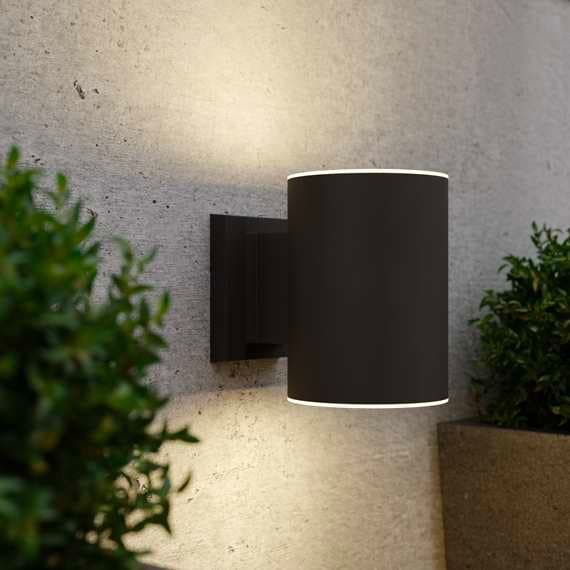
Enhance garden visibility and security with these Grantham Up & Down Solar Wall Lights for £29.99. They include a power-saving mode for double performance, high-grade frost-resistant materials, easy DIY installation, and an aluminium body that resists the elements.
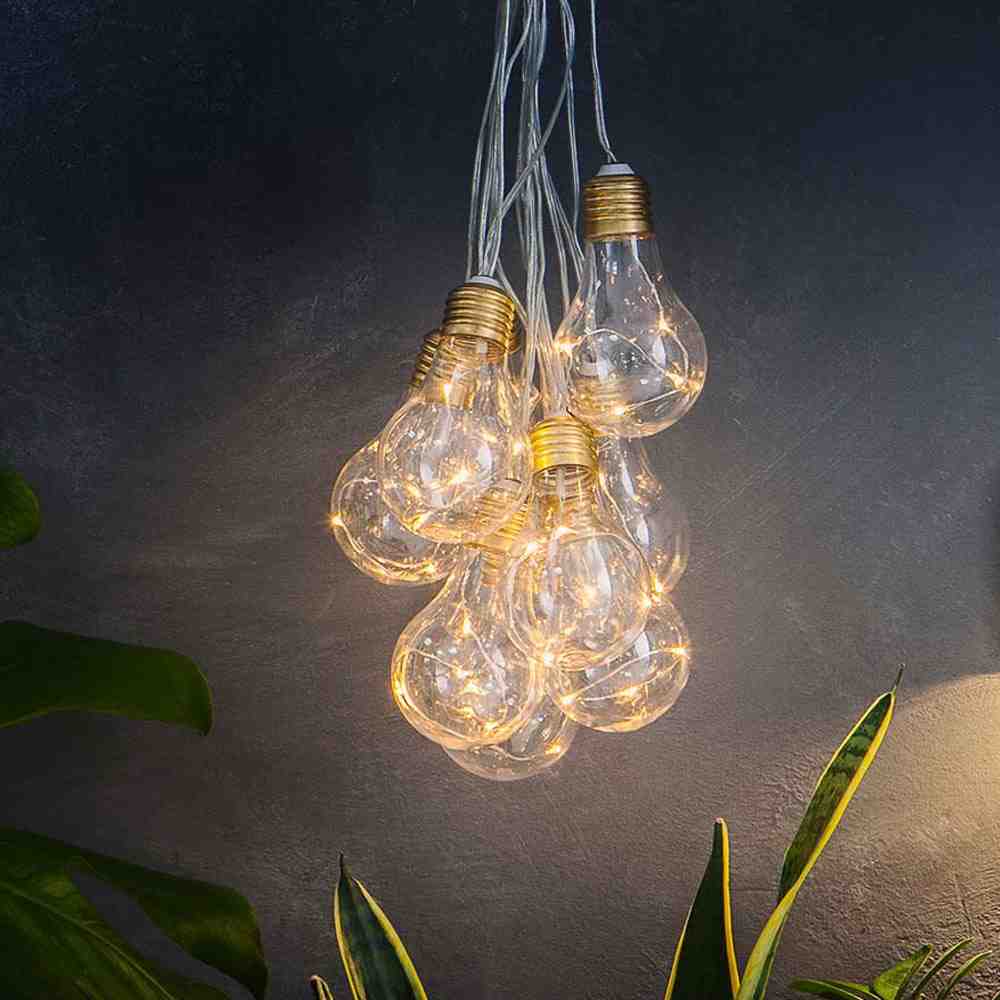
If it’s soothing ambient lighting you seek, these Lumify USB Vintage Solar Light Bulbs offer a vintage, aesthetic look with lights that can be draped over trellises, fence frames and garden furniture for only £34.99. These lights come with a standard one-year warranty, aesthetically pleasing festoon bulbs, and a reduced-brightness, power-saving mode that can drastically extend the battery life.
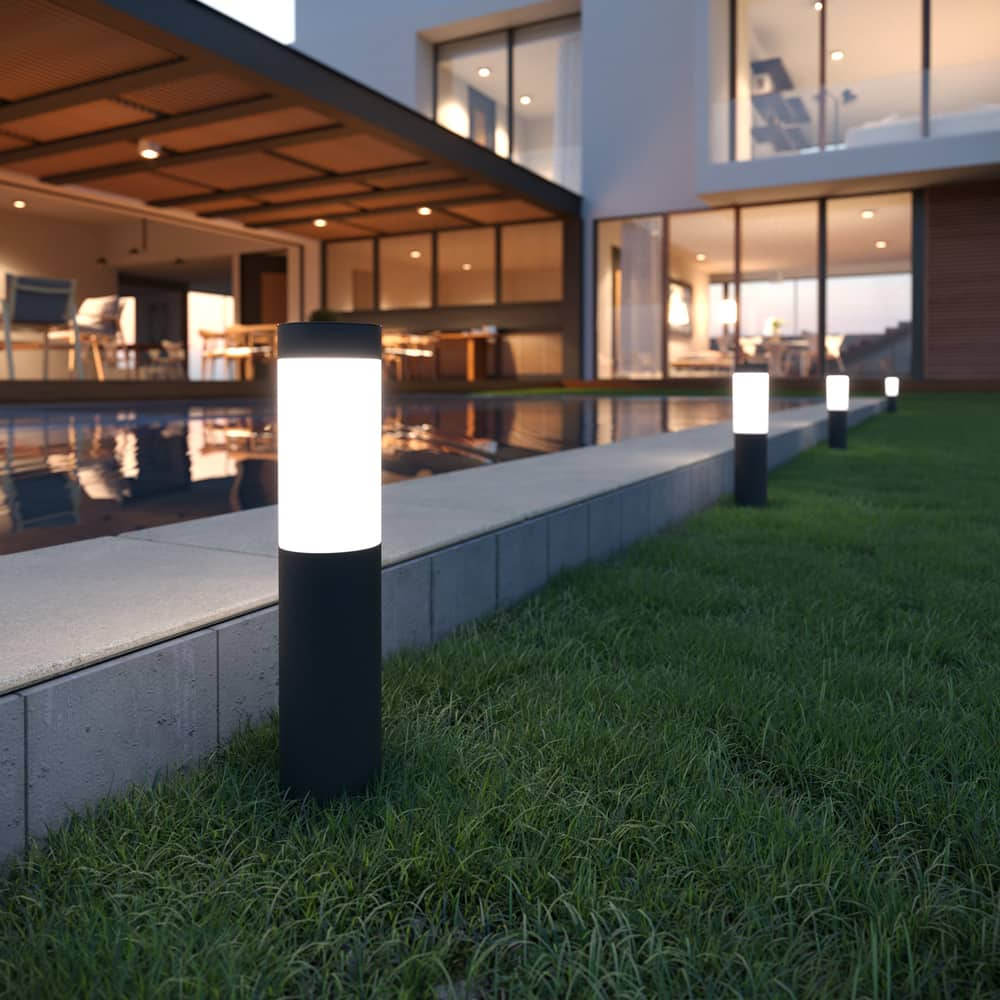
For essential, powerful main lights for large gardens, look no further than these Mini London Solar Post Lights for £29.99. These lights are perfect for illuminating a well-kept, modern garden. They come in a set of four premium, expertly made post lights, and offer a battery-preserving power-saving mode, while offering easy installation and seamless fitting — a much easier alternative to mains-powered fixtures.
Frequently Asked Questions (FAQs)
Q: Do Solar Lights Work in The Winter?
A: Cost-effective solar lights will not withstand the harsh environmental weathering of winter, or the lack of light.
However, a good quality, durable set of outdoor solar lights should be able to remain functional and be able to siphon power during the day — even during the darker months of the year. Usually, better quality solar lights come at a higher price point, but due to their durability, they often save money in the long term.
Q: How Do Solar Lights Know When to Come On?
A: Solar lights can determine the time of day and when best to activate due to a small object known as a photoresistor. A photoresistor is a device that controls the circuits inside an electronic device depending on how light or dark the environment is.
When it’s dark, the photoresistor sends a signal to close the circuit, turning the lights on. As it gets lighter, the photoresistor senses the change in light and opens the circuit to switch the lights off. This little device stops helps conserve energy maximise the life of the solar battery.
Q: Are Solar Lights Damaged by Rain?
A: Most solar lights possess water-resistant or waterproof technology to help protect the inner circuitry of the solar lights for extended periods. While extremely heavy rainfall may damage cheaper solar lights, more expensive options with waterproof technology can weather even the harshest of environmental conditions.
More from The Solar Centre
Looking for more tips from our solar lighting experts? Check out our other useful guides, including…

